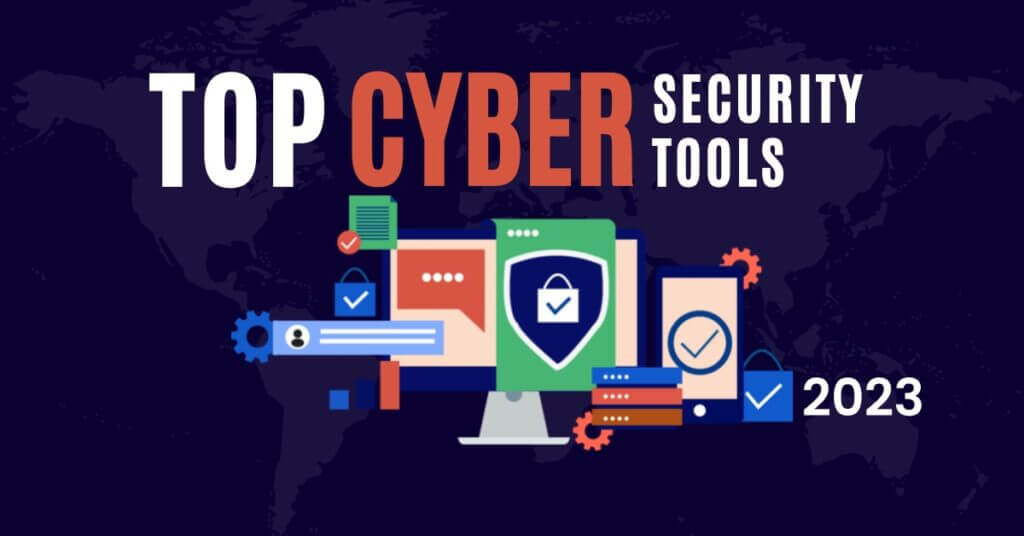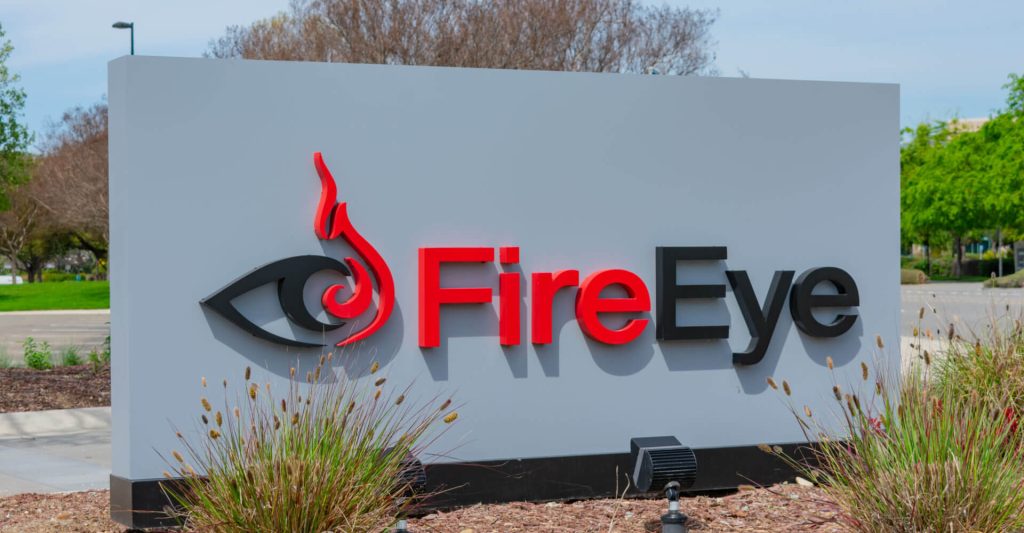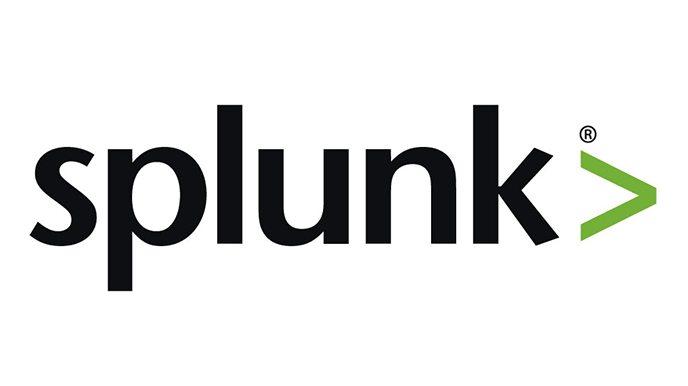Stay Ahead of Cyber Threats: The 10 Must-Have Network Security Tools in 2023
In our increasingly interconnected digital world, safeguarding your network against cyber threats is paramount. With cyberattacks becoming more sophisticated, having effective network security tools in place has never been more crucial. In this article, we will introduce you to the top 10 network security tools that you should consider implementing in 2023.

1- Wireshark
Wireshark is a powerful network packet analysis tool. It allows you to monitor and examine network traffic in real-time. Wireshark has the capability to parse network data packets to identify security issues, from protocol error checking to detecting network attacks.
Features
- Real-time Network Monitoring: Wireshark provides real-time network monitoring capabilities, allowing users to capture and analyze network traffic as it happens. This feature is invaluable for identifying and addressing network issues promptly.
- Packet Analysis: Wireshark is renowned for its packet-level analysis capabilities. It can dissect and decode network packets, revealing the contents of data being transmitted. This deep packet inspection helps in understanding network protocols and detecting security vulnerabilities.
- Protocol Support: Wireshark supports a vast array of network protocols, making it a versatile tool for network administrators and security professionals. It can dissect and analyze protocols such as TCP, UDP, IP, HTTP, DNS, and many more, providing insights into how these protocols are behaving on the network.
- Rich Filtering Options: Wireshark offers robust filtering options, allowing users to focus on specific network traffic of interest. Filters can be applied based on various criteria, including source or destination IP addresses, ports, and packet content. This flexibility helps users narrow down their analysis to relevant data.
Pros
- Open Source: Wireshark is an open-source tool, meaning it’s freely available for users to download, use, and modify. This accessibility has contributed to its popularity and a strong user community.
- Cross-Platform Compatibility: Wireshark is available for multiple operating systems, including Windows, macOS, and various Linux distributions. This cross-platform compatibility ensures that users can leverage its capabilities regardless of their preferred operating system.
- User-Friendly Interface: Despite its powerful packet analysis capabilities, Wireshark offers an intuitive and user-friendly interface. It provides both command-line and graphical user interfaces, making it accessible to users with varying levels of technical expertise.
- Community Support: Wireshark benefits from a large and active user community. Users can access extensive documentation, forums, and online resources to seek help, share knowledge, and troubleshoot issues.
- Continuous Development: The Wireshark project is actively maintained and regularly updated to include support for new protocols and features. This commitment to development ensures that Wireshark remains a cutting-edge network analysis tool.

2 – Snort
Snort is an open-source Intrusion Detection System (IDS) and Intrusion Prevention System (IPS). It is used to monitor network traffic and detect suspicious activities or attack patterns. Snort can be configured to generate alerts or automatically take specific actions to counteract attacks.
Features
- Open-Source: Snort is an open-source Intrusion Detection System (IDS) and Intrusion Prevention System (IPS), which means it’s available for free and can be customized to meet specific needs.
- Network Traffic Monitoring: Snort excels in monitoring network traffic in real-time. It analyzes packets of data flowing through a network and can identify any unusual or malicious activities.
- Signature-Based Detection: Snort uses signature-based detection, which means it compares network traffic patterns with a database of known attack signatures. This allows it to recognize and respond to known threats effectively.
- Alert Generation: Snort can be configured to generate alerts when it detects suspicious activities or attack patterns. These alerts are crucial for network administrators to take immediate action against potential threats.
- Customizable Rules: Network administrators can create custom rules in Snort to tailor its detection capabilities to the specific needs of their network. This flexibility makes it adaptable to various environments.
Pros
- Open-Source Advantage: Being open-source means Snort has a vast community of users and developers continually improving and updating the system. This ensures that it stays up-to-date with emerging threats and vulnerabilities.
- Cost-Effective: Snort’s open-source nature eliminates licensing costs, making it an attractive option for organizations with budget constraints.
- Highly Customizable: Network administrators can fine-tune Snort to meet the unique security requirements of their network. They can create and modify rules, making it highly adaptable to changing threat landscapes.
- Effective Threat Detection: Snort is known for its effectiveness in detecting known threats. It can identify and respond to a wide range of attack patterns, enhancing network security.
- Real-Time Monitoring: Snort operates in real-time, which means it can detect and respond to threats as they happen, reducing the risk of security breaches.
- Community Support: The extensive Snort community provides access to a wealth of knowledge, support, and additional resources, making it easier for users to implement and maintain the system.
- Scalability: Snort can be deployed in various network environments, from small businesses to large enterprises, and it can scale to meet the needs of different network sizes.

3 – FireEye
FireEye is an advanced intrusion prevention solution built on network analysis and advanced threat detection. It has the ability to detect zero-day attacks and various complex network threats. FireEye provides the opportunity to monitor and protect networks from attacks while offering insights on how to handle those attacks.
Features
- Advanced Intrusion Prevention: FireEye is designed to offer advanced intrusion prevention capabilities, making it capable of detecting and mitigating complex network threats effectively.
- Zero-Day Attack Detection: One of FireEye’s standout features is its ability to detect zero-day attacks. These are attacks that target vulnerabilities unknown to security experts, making them particularly challenging to defend against. FireEye’s advanced threat detection mechanisms can identify and protect against such attacks.
- Network Analysis: FireEye employs extensive network analysis to monitor network traffic and identify suspicious patterns or anomalies. This approach helps in detecting both known and unknown threats.
- Threat Intelligence: FireEye provides actionable threat intelligence, which includes information about emerging threats and attack trends. This can be invaluable for organizations looking to proactively defend against evolving threats.
- Incident Response: In addition to threat detection, FireEye offers insights on how to respond to detected threats. This guidance can help security teams take appropriate action to mitigate the impact of an attack.
Pros
- Effective Threat Detection: FireEye’s ability to detect advanced and zero-day attacks makes it a valuable asset for organizations looking to bolster their cybersecurity defenses. It can identify threats that other security solutions might miss.
- Threat Intelligence: The inclusion of threat intelligence allows organizations to stay informed about emerging threats and vulnerabilities, enabling them to take proactive measures to enhance security.
- Incident Handling: FireEye not only identifies threats but also provides guidance on how to respond to them. This can significantly improve incident response times and reduce the potential damage caused by cyberattacks.
- Comprehensive Network Protection: FireEye offers comprehensive protection by monitoring network traffic, identifying suspicious activities, and providing insights on threat mitigation. This multi-layered approach enhances overall network security.
- Visibility and Insights: The network analysis capabilities of FireEye provide organizations with increased visibility into their network traffic. This visibility helps security teams make informed decisions about security measures.
- Scalability: FireEye can be scaled to meet the needs of organizations of various sizes, from small businesses to large enterprises, making it a versatile choice for different environments.

4 – Cisco ASA
Cisco ASA (Adaptive Security Appliance) is a comprehensive security solution. It offers firewall, VPN, Intrusion Detection System (IDS), and various other security features in a single device. Cisco ASA helps control incoming and outgoing network traffic, protecting against attacks and ensuring the security of critical data.
Features
- Firewall: Cisco ASA provides a robust firewall to control network traffic coming in and going out of your network. This helps prevent network attacks and safeguards critical data.
- Virtual Private Network (VPN): ASA supports secure VPN connections, allowing remote users to access the internal network securely. This is particularly useful for businesses with remote employees or branch offices.
- Intrusion Detection System (IDS): Cisco ASA includes an integrated intrusion detection system that helps detect and alert on suspicious network activities or potential network attacks.
- Multi-Layer Protection: ASA offers multi-layer protection with the ability to control traffic, inspect applications, and manage network access.
Pros
- Integrated Features: One of the major advantages of Cisco ASA is its integration of multiple security features into a single device, which saves costs and simplifies management.
- Comprehensive Network Security: ASA provides a comprehensive network security solution with various layers of protection, enhancing defense against network threats.
- Suitable for Enterprises: Cisco ASA is commonly used in large and medium-sized enterprises due to its scalability and high level of integration.
- Strong Technical Support: Cisco has a robust technical support system in place, ensuring users have the necessary support when encountering issues or needing configuration assistance.

5 – Nessus
Nessus is a powerful network vulnerability scanning and security analysis tool. It is used to assess systems and applications to identify potential security vulnerabilities that can be exploited by hackers. Nessus provides reports on specific vulnerabilities and assists in remediation efforts to address them before being exploited.
Features
- Powerful Network Vulnerability Scanning: Nessus is a robust tool for scanning and analyzing network vulnerabilities. It has the capability to scan a variety of systems and applications to identify potential vulnerabilities that hackers could exploit.
- Detailed Reporting: Nessus provides detailed reports on the vulnerabilities it detects, including information on the level of risk and how to remediate them. This helps organizations gain a clear understanding of security risks and prioritize security efforts.
- Multi-Platform Support: Nessus supports scanning on multiple operating systems and applications, allowing security checks across various types of systems.
- Detection of Potential Vulnerabilities: Nessus not only identifies specific vulnerabilities but also recognizes potential vulnerabilities based on current security knowledge.
Pros
- Enhanced Security: Nessus enhances security by helping organizations identify and remediate network vulnerabilities before they can be exploited by malicious actors.
- Automated Reporting: Nessus automatically generates reports on the vulnerabilities it detects, making it easy for administrators and security teams to track and take remedial actions.
- Efficient Scanning and Remediation Support: Nessus optimizes the security assessment and vulnerability remediation process, saving time and resources.
- Suitable for Diverse Environments: Nessus can be used in various environments, from enterprises to government organizations and non-profit entities.

6 – Suricata
Suricata is an open-source Intrusion Detection System (IDS) and Intrusion Prevention System (IPS). It monitors network traffic and detects patterns of abnormal behavior. Suricata has the ability to take actions such as blocking malicious traffic or alerting administrators about security incidents.
Features
- Intrusion Detection System (IDS) and Intrusion Prevention System (IPS): Suricata is a powerful open-source solution that offers both IDS (Intrusion Detection System) and IPS (Intrusion Prevention System) capabilities. This means it not only has the ability to detect intrusive activities on a network but can also prevent them before they cause harm.
- Network Traffic Monitoring: Suricata continuously monitors and analyzes network traffic, enabling it to detect patterns of abnormal behavior that may indicate network attacks.
- Actionable Capabilities: Suricata has the ability to take actions such as blocking intrusive network traffic or alerting administrators about security incidents.
Pros
- Open Source: Suricata is an open-source project, which means it is freely available to the community and can be customized to suit the needs of individual organizations.
- Strong Community Support: The open-source community around Suricata provides robust support through documentation, forums, and knowledge-sharing interactions.
- Integration with Other Solutions: Suricata can integrate with other security tools and solutions, enhancing its ability to detect and prevent network attacks.
- Automated Action Capabilities: Suricata can automatically take actions, such as blocking intrusive traffic, helping to quickly and effectively protect the network.

7 – Palo Alto Networks
Palo Alto Networks offers a range of network security products, including application firewalls and threat detection services. They interact to identify and prevent network attacks. Palo Alto Networks focuses on preventing attacks by identifying applications and threats in real-time.
Features
- Application Firewalls: Palo Alto Networks provides application firewalls, allowing control of network traffic based on specific applications rather than just ports and protocols. This enhances security and network traffic management efficiently.
- Threat Detection Services: Palo Alto Networks offers network threat detection services, helping to identify and alert on security threats such as malware, denial-of-service (DoS) attacks, and other types of cyberattacks.
- Real-time Detection and Prevention: Palo Alto Networks emphasizes real-time detection and prevention, helping to thwart network attacks and respond to them immediately.
Pros
- Integrated Application and Threat: Palo Alto Networks combines application identification and threat detection in a single system, streamlining network security management.
- Comprehensive Security: Palo Alto Networks provides a comprehensive security solution, from application firewalls to threat detection services, helping to protect systems against various network attacks.
- Real-time Detection and Response: Palo Alto Networks focuses on real-time detection and response to network attacks, minimizing the risk and damage from security incidents.
- Strong Technical Support: Palo Alto Networks offers robust technical support to assist customers in resolving issues and effectively deploying security solutions.

8 – Splunk
Splunk is a powerful Security Information and Event Management (SIEM) system. It collects, analyzes, and reports on security data from various sources. Splunk helps you monitor security events, identify abnormal behaviors, and assists in detecting cyberattacks.
Features
- Security Information and Event Management (SIEM) System: Splunk is a robust SIEM system that allows for the aggregation, analysis, and reporting of security data from multiple sources. This helps organizations monitor security events and detect abnormal behaviors.
- Security Data Analysis: Splunk has the capability to analyze security data to identify suspicious patterns and trends, aiding in the detection and response to cyberattacks.
Pros
- Integration with Multiple Data Sources: Splunk can integrate with various security data sources, including system logs, application logs, and data from network devices, enabling comprehensive data aggregation.
- Rapid Security Incident Detection: Splunk facilitates quick security incident detection by providing real-time alerts and reports when abnormal activities occur.
- Easy Integration with Other Tools: Splunk can be easily integrated with other security tools and solutions, optimizing the detection and response to attacks.
- Event Management and Compliance: Splunk offers event management and compliance tracking to monitor and adhere to security rules and compliance regulations.

9 – CrowdStrike
CrowdStrike is an integrated security solution that uses artificial intelligence to detect and prevent network threats. It provides protection for databases and mobile devices, ensuring the security of your entire system.
Features
- Integrated Security Solution: CrowdStrike is an integrated security solution that combines various security features into a single platform. This simplifies security management and enhances the ability to detect and prevent threats.
- Utilizes Artificial Intelligence (AI) for Threat Detection: CrowdStrike utilizes artificial intelligence (AI) to detect and prevent network threats. This technology automatically identifies abnormal and potential behaviors in network traffic.
Pros
- Data and Mobile Device Protection: CrowdStrike offers protection for databases and mobile devices, ensuring that not only servers and computers but also mobile devices are secured.
- Real-time Detection and Prevention of Network Threats: CrowdStrike’s AI technology helps in real-time detection and prevention of network threats, minimizing risks and damages from cyberattacks.
- Easy Integration and Management: CrowdStrike allows easy integration with other systems and streamlined security management, making it more efficient for organizations to manage security.
- Comprehensive Security: By safeguarding both data and mobile devices, CrowdStrike provides a comprehensive security solution for organizations.

10 – OpenVAS
OpenVAS is an open-source network vulnerability scanning tool. It helps you identify and evaluate security vulnerabilities in your systems and applications. OpenVAS provides the opportunity to perform regular security checks and identify issues that need to be addressed.
Features
- Open-Source Network Vulnerability Scanning Tool: OpenVAS is an open-source network vulnerability scanning tool that allows users to check and assess security vulnerabilities in their systems and applications.
- Security Vulnerability Analysis: OpenVAS provides features for analyzing security vulnerabilities, including determining the level of risk and how to remediate them.
Pros
- Open Source: OpenVAS is an open-source project, meaning it is free and available to the community. This helps save costs and provides flexibility for customization and deployment.
- Regular Security Checks: OpenVAS offers the capability to perform regular security checks, allowing organizations to monitor and assess the security of their systems and applications over time.
- Integration with Various Tools: OpenVAS can integrate with various other tools and solutions, offering flexibility in the vulnerability scanning and remediation process.
- Detailed Reporting: OpenVAS provides detailed reports on the vulnerabilities it detects, helping users understand the level of risk and how to address them.

Conclusion
After reading this article, we hope you understand the various tools for maintaining Cyber Security of businesses. In this article, we presented the Top 10 Cyber Security Tools that can be helpful to your organisation in safeguarding and protecting its data. Cyber risks have increased in recent years, and it has become critical for companies to safeguard their and customers’ data. A cyberattack can result in downtime for the organisation, resulting in loss of productivity and negatively impacting performance.